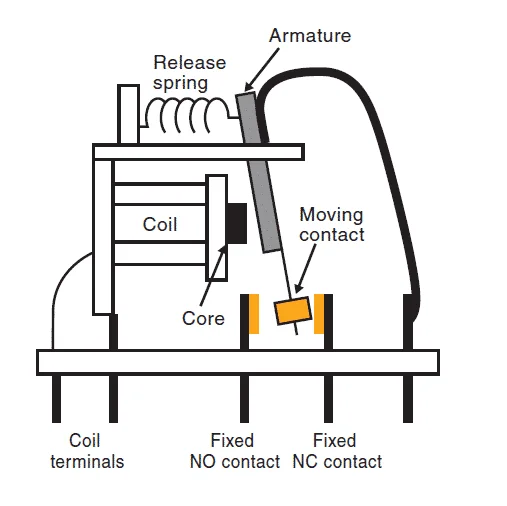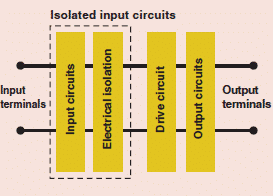Relays are electrically operated switching devices, used to gain control over processes and circuits. Based on their principle of operation they are classified into two types: Solid-state relays and electromechanical relays. In this article let us discuss each one of them, their differences and similarities.

Comparison of electromechanical and solid-state relays
| Electromechanical relays | Solid-state relays |
|---|---|
| In these relays, electromechanical force is generated by the relay coil on the application of voltage. This force pulls the armature and closes the relay contacts | SSRs do not have electromagnet or any moving contacts in it. Instead, it consists of semiconductors and optocouplers within. When a voltage is applied to the input section of the SSR, current flows through the optocoupler and triggers the TRIAC at the output section, and the TRIAC starts conducting. |
| An electromechanical relay consists of the following parts: 1. Electromagnetic coil 2. Armature 3. Contacts | A Solid-state relay consists of the following sections: 1. Input circuit 2. Optocoupler 3. Output driver circuits 4. Semiconductor switching devices. |
| An electromechanical relay uses physical contacts for switching. | An SSR uses semiconductor devices such as TRIAC, Thyristors, MOSFETs and transistors. |
| Relay contacts gets eroded during prolonged switching. | SSRs do not have mechanical contacts. |
| Heat generated by these relay are little and can be neglected. | Semiconductors inside the SSR generated large amount of heat. Therefore heat sinks are required for heat dissipation. |
| These relays produces noise while switching. | No switching noise. |
| Fluctuations in coil voltage causes chattering of contacts in an electromagnetic relays. | No chattering due to the absence of mechanical contacts. |
| On-load switching of relay contacts can result in arc formation. | No arch formation. |
| The inductance of electromagnetic coil may cause voltage surges while switching. | No risk of voltage surges in solid-state relays. |
| Electromechanical relays has a life time of few million mechanical switching. | SSR lasts longer than electromechanical relays. |

